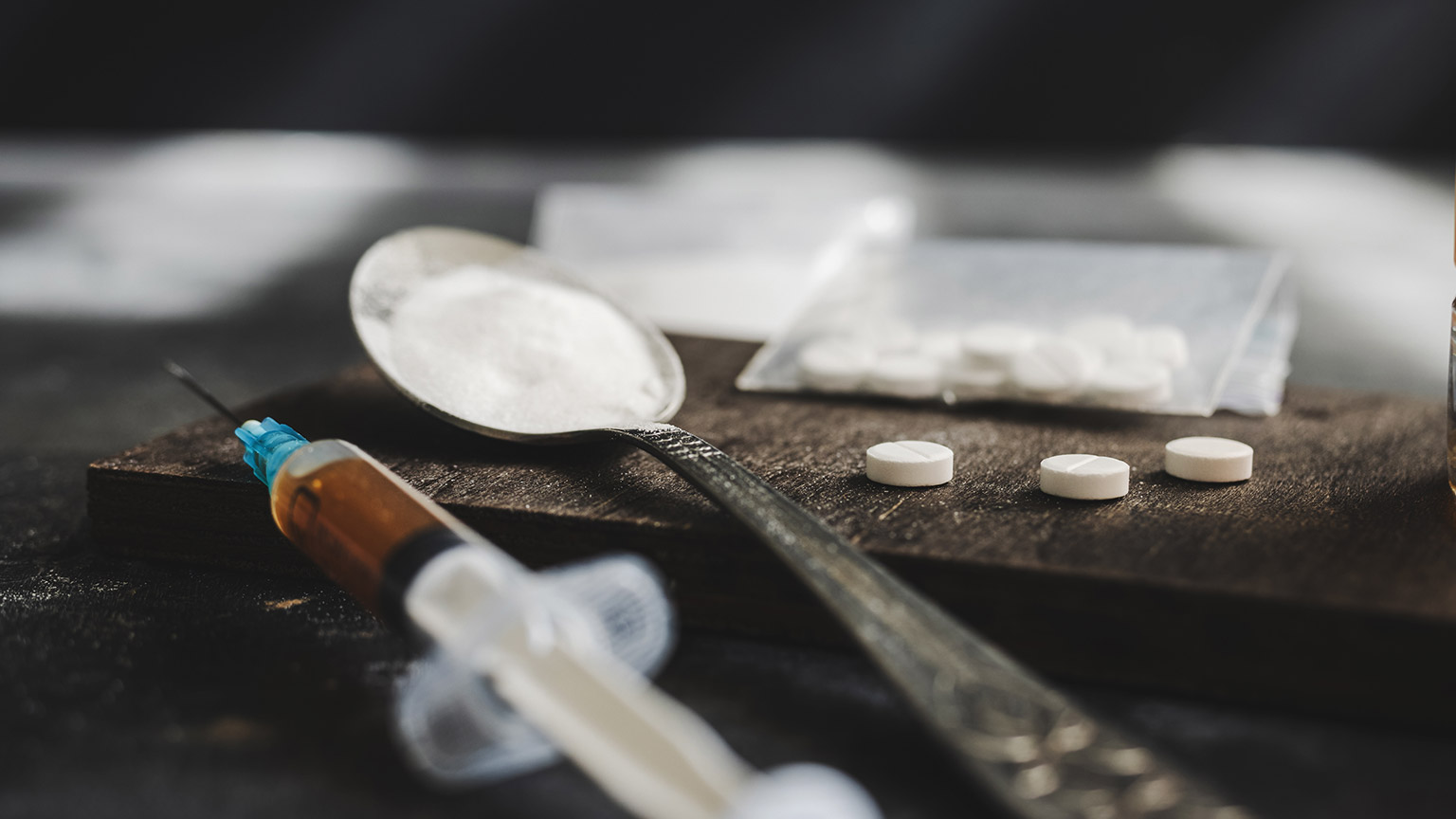The way in which we think about drug use and the way that society treats people who use alcohol and other drugs (AOD) inform how the community services sector and we as individual practitioners, work with and approach related issues.
By the end of this topic, you will understand:
- models of drug use used to understand addiction and dependence
- our own attitudes and values and how they inform our practice
- harm minimisation.

There have been several models of drug use developed over time to try to understand why people use and become addicted or dependent on alcohol and other drugs.
In summary, these are:
| The moral model | This model posits addiction as a sin or a moral weakness. |
| The psychodynamic model | This model stresses that childhood traumas are associated with drug use as a coping mechanism. |
| The disease model | This model claims the origins of addiction lie in the individual person as a disease of the brain. |
| The pharmacological model | Also known as ‘pharmacological fundamentalism’, this model is built on the belief that some substances have an intrinsic power or attraction that overpowers the will of the individual, communities and societies. |
| The social learning model | This model says addictive behaviours are learned, exist on a continuum and involve many behavioural and cognitive processes. |
| The biopsychosocial model | This model maintains that AOD abuse must be scrutinised in a wider social context and can be connected to economic and other inequalities present in modern society as well as the individual’s psychology and biological determinants. |
| The public health model | In this model, drug use is viewed as an interaction of the individual’s personality, history, genetics and biology; the drugs used; and the environment in which the user encounters the drug. |
The Psychodynamic Model
Psychodynamic theory originated with the father of psychiatry, Sigmund Freud, in the 1800s. It is still applied to treat drug addiction through psychological therapy. Fundamentally, this model says that everyone can trace their problems to their childhood, which influences how they cope with the issues that life throws at them as adults. In other words, using and misusing AOD can be seen as an unconscious response to childhood trauma.
This model forms the basis of treatment approaches with the aim of gaining insight into an individual’s unconscious motivations and how they can reduce anxiety and enhance their self-image, thereby reducing their unconscious need for drugs to fill a gap in their coping mechanisms.
This model also says that drug users turn to drugs as a soothing mechanism to reduce or remove unpleasant feelings associated with anxiety related to childhood trauma. Psychoanalytic theory proposes that people use defence mechanisms, such as denial, projection, regression, rationalisation, anger and avoidance, to cope with anxiety.
The Disease Model
The disease model of addiction makes the assertion that addiction is a brain disease characterised by abnormalities in an individual’s brain structure and functioning, which cause them to become addicted to drugs.
The disease model supposes that:
- Addiction either exists or it does not—it is not on a continuum
- Addiction is irreversible—it is incurable and can be treated only by lifelong abstinence
- Addicted individuals are unable to control their intake of a substance. Once an individual partakes of the substance, they are powerless to stop and are overtaken by cravings when they cannot have it.
He needs to drink but he doesn’t dare... You know: one drink is too many, two is not enough…Terry Pratchett, Feet of Clay, 1996
Explore
Alcoholics Anonymous (AA) bases its model of addiction and recovery on the disease model.
Explore the AA website and make notes on how it makes use of concepts from the disease model: Alcoholics Anonymous.
The Pharmacological Model
The pharmacological model is founded on the conviction that the intrinsic power or attraction of a drug is able to completely overwhelm the individual’s will. Those who are in the grip of these powerful substances are considered victims of the drug and its effects on them, and the drugs alone are to blame for the individual’s circumstances.
Reading
This article explains how the pharmacological model was formed and applied to addiction services:‘The Pharmacological Model (Pharmacological Fundamentalism)’ from YouthAOD Toolbox
The Social Learning Model
Before the 1960s, drug and alcohol dependence was understood in the context of an individual’s physical need for a substance and how they experienced withdrawal symptoms in its absence. In the 1970s, the social learning model introduced the concept that drug dependence is chemical, behavioural and social in nature.
Proponents of this theory reject the idea that individuals who use drugs are ill, immoral, criminal or vulnerable to the power of the substance. This model posits that drug-using behaviour is learned and reinforced by peers, parents, partners and/or the media. Drug use is not seen in the context of good or bad, and the ‘choice’ to use drugs is recognised as a process of weighing up the costs and benefits in terms of the drug, the user and their environment.
Watch
This video explains how models of addiction began to change as the study of social sciences arose in the mid-20th century: ‘Social Influences on Addiction - Investigating Addiction (3/6)’ by OpenLearn from The Open University on YouTube
The Biopsychosocial Model
The biopsychosocial model views an individual’s drug use as determined by interrelated factors that are biological, psychological/emotional and social/structural in origin. Emphasis has recently been placed on also tying in developmental and sociocultural factors.
This is a multidimensional and holistic model that underpins a variety of practice frameworks and approaches that concentrate on recognising and addressing the contributing factors of an individual’s or a group’s drug issues and on developing solutions that are adapted to the individual’s needs and the needs of groups and communities.
The biopsychosocial model and public health model are prevalent in drug treatment and prevention services in the current context of AOD services in Australia.
Reading
This blog post discusses the multifaceted and complex influences that impact on the likelihood of a person turning to drugs: ‘The Biopsychosocial Model of Addiction’ from Ethos Recovery”.
Watch
This video discusses the multifactorial approach to understanding addiction Factors for Drug Use and Drug Abuse’ by khanacademymedicine on YouTube
The Public Health Model
The public health model has framed the Australian approach to treating and preventing addiction since the mid-1980s. The National Campaign Against Drug Abuse came out of the National Drug Summit of 1985 and the later National Drug Strategy 1992–97 and 1998–03 and continues to inform treatment and prevention programs. The public health model uses an integrated approach that recognises three pivotal factors and their interrelationship:
- The individual – The user and their characteristics
- The agent – The drug and its characteristics and effects
- The environment – The context in which the drug is used
The public health model acknowledges there are many factors that interplay in the use and abuse of drugs and that people working in the public health and services sphere must approach the problem of drugs in the community from a number of angles.
Reading
Read the following article to learn more about the public health model:‘Public Health or Health Care Model’ from YouthAOD Toolbox.

The stages of change model identifies that every person is at a different stage of willingness to change. It says that practitioners in the AOD field must not make assumptions about their client’s readiness to make immediate or permanent changes to their behaviour. When a worker can identify where a client is in the change process, they can provide interventions tailored to the client’s stage of readiness for change.
The Five Stages of Change
Stage 1- Precontemplation
The client is not thinking sincerely about changing and can be defensive about their drug use. At this stage, they may not see that their drug use is problematic. The way they see it, the pluses of their using outweigh the minuses or negative consequences, so they are content to continue using.
Stage 2- Contemplation
The client ponders the prospect of quitting or decreasing their drug use but is unsure about taking the next step. They still enjoy taking drugs, but they are starting to experience negative consequences, such as personal, psychological, physical, legal, social or family problems.
Stage 3- Preparation
The client has tried to make changes to their using habits in the last 12 months. They have now recognised the negative consequences of continuing to use outweigh the pleasures brought by taking the drug, and they become more serious about the next steps to sobriety. The client understands they must make changes and that the time for change is on the horizon. However, some people will decide not to make any changes at this stage.
Stage 4- Action
The client will take active involvement in the steps required to start changing their using habits and may take huge strides towards meaningful changes in their behaviours. The client may try a variety of methods of giving up or reducing drug taking. During this part of the process, clients are at their biggest risk of relapse. Some clients may still feel ambivalent about change at this stage.
Stage 5- Maintenance
The client can avoid the temptation to go back to their past using behaviours. They have learned how to anticipate and manage their impulses to use and have learned new ways of coping that they can employ. At this stage, it is normal for clients to have minor setbacks, but these setbacks are not seen as failures.
Relapse
Most clients will experience a relapse when changing their using behaviours. Relapses provide important learning opportunities and can assist the client in strengthening their resolve to change. On the other hand, there are times when relapses might cause a client to give up on their attempt to change. The crux of recovering from relapse is for a client to evaluate their attempt so far, recognise their individual strengths and weaknesses, and then create strategies to improve their weaknesses, which they can use to address problems when they next happen.
Relapse is a key part of the action and maintenance stages. Many clients who do make changes to their behaviour decide for several reasons to resume their drug use or return to old patterns of behaviour. Researchers have identified that, in the stages of change model, relapse is the ‘rule’ rather than the ‘exception’.
Important
Lapse vs relapse:
A lapse is like a small slip—the client will quickly return to the action or maintenance step in the process. A relapse is a return to the original problematic drug use behaviours.

How you feel about drug use and people who use drugs will influence the way in which you treat your clients in the AOD sector.
We all have what are called ‘unconscious biases’: thoughts and feelings that we do not even know we have, which influence the way we deal with people in our lives every day. These biases are reinforced by our environment and experiences, and they become the basis for a great deal of our patterns of behaviour towards people who are different from us.
It is important to examine your own attitudes towards AOD and people who are affected by them so that you can give the best possible service and assistance to your clients based on their actual needs rather than what you think they need.
Case Study
Brittany
Brittany decided that she wanted to work with young people with drug problems because she lost her son, aged 15, to an overdose. She had a lot of grief counselling and studied hard to get her degree in social
services—both activities helped her heal from her loss.
Because of her personal experiences, Brittany was able to empathise with young people with addictions and their families once she began working in the sector. She worked hard and helped a number of young people who came to her service through diversion programs, allowing young people charged with minor offences to avoid jail by undertaking counselling and other programs.
One day Brittany was introduced to a young woman, Lolli, who, during a group session, admitted that she had dealt drugs to feed her own habit. Brittany found that she was unable to work with Lolli, as she could not feel comfortable with her and, in reflection, she found herself getting angry and defensive.
Brittany’s unconscious biases were working against her instead of seeing Lolli as a victim, she saw her as a perpetrator.
Learn more about recognising and overcoming your unconscious bias: ‘How to Recognise and Overcome Your Unconscious Bias’ from The Guardian
Watch
In this Ted talk, the presenter discusses how our unconscious biases hold us back and how to address them: ‘How to Outsmart Your Own Unconscious Bias | Valerie Alexander | TEDxPasadena’ by TEDx Talks on YouTube
Australia’s long-standing commitment to harm minimisation considers the health, social and economic consequences of drug use on individuals, families and communities as a whole and is based on the following considerations:
- drug use occurs across a continuum, from occasional use to dependent use;
- a range of harms are associated with different types and paerns of drug use; and
- the response to these harms requires a multifaceted response.
~ National Drug Strategy 2017–2026

Harm minimisation strategies have been blended with the public health model of drug use to reduce the risks and harms of drug use and addiction, and improve health outcomes for users.
Harm minimisation strategies are based on the acknowledgement that is it not possible to eliminate addiction, abuse or misuse of drugs in the community and that certain drugs have inherent risks and harms associated with their misuse, abuse and addition. Instead, the goals of harm minimisation in the public health context are to identify and reduce the harms that are caused by drug addiction, abuse and misuse. Because these drug problems affect not only the individuals who use, but their families and community as a whole, harm minimisation provides assistance that will provide an overall improvement in public health.
Examples of harm minimisation strategies
- Diversion programs – One social harm that might come from using illicit drugs is ending up with a criminal record if a user is caught by the police for possession. Drug diversion programs give individuals who are charged with less serious drug offences—such as possessing a small amount or cannabis—education and/or treatment options. Diversion programs can help individuals avoid getting a criminal record and provide access to early intervention programs.
- Sobering-up services – These services give intoxicated individuals a safe environment in which to get care and sober up until the substances they took subside. They can be an alternative to police cells for individuals apprehended for being intoxicated.
While the goal of these services is to protect individuals as they sober up, they can also provide brief/early intervention services and referrals to other agencies for further help.
Case Study
Overdoses at Music Festivals
One of the biggest harm reduction conversations we have had in Australia in the past five or so years has been around music festivals. After a number of young people overdosed or died after taking illicit drugs, parents, drug reform campaigners and other stakeholders called for action to be taken to reduce the risks that young people encounter when taking drugs at festivals.
One cause of overdose identified is the fear of getting caught and the use of intimidating policing, including using sniffer dogs and dubious body searches. Some individuals take all the pills they are carrying to avoid getting caught, and they overdose.
Another cause is that users do not always know what is in the drugs they buy and do not understand the effects of different substances used in making the drug. The substances used could include:
- Ephedrine
- Dextromethorphan
- Ketamine
- Caffeine
- Bath salts
- Cocaine
- Methamphetamine.
People may accidentally take too much of the drug, thinking it is not working and then have adverse reactions to the unknown substances. After appropriate community consultation, the Alcohol and Drug Foundation has collected and published information about how organisers of these events can assist the community in reducing harm: ‘Harm Reduction Strategies’ from the Alcohol and Drug Foundation
Watch
The cutting edge of addiction research is beginning to question everything previous generations have thought about addiction and drug use. Watch this video, keeping in mind what you learned about your unconscious biases: ‘Everything You Think You Know About Addiction Is Wrong | Johann Hari’ by TED on YouTube
Insert sub-topic content here.
